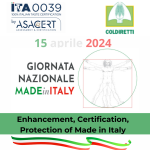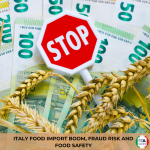“Act: think globally, eat locally.” This is the mantra that today, June 18th, Sustainable Gastronomy Day, we must repeat with even more force and conviction than ever. Established on 21 December 2016 by the United Nations General Assembly, this Day was born with the aim of promoting an environmentally friendly style of cooking.
Food is part of our daily life not only as a source of nourishment. Italians have always stood out for their ability to make a delicious plate of food, a good glass of wine, or a traditional dessert, convivial occasions that accompany unforgettable moments.
Eating, however, is no longer just a pleasure or a necessary need: in recent years, it has also become an act of responsibility. Choosing what to eat means helping to give a different orientation to our society.
The watchword therefore becomes “sustainable food”. But how can we contribute to this change? Fortunately, things are already moving: as mentioned in our previous article, if approved, the PNRR (National Recovery and Resilience Plan) will require the entire agri-food chain to innovate and make its activities sustainable in order to reduce their impact, both environmental and economic. The same is asked by European Union which, with the “Green Deal” and the “Farm to fork” strategy, plans to reduce by 2030:
- 50% of the use of pesticides and related risks
- at least 20% of the use of fertilizers
- 50% of sales of antimicrobials used for farm animals and aquaculture
And to achieve the goal of allocating 25% of agricultural land to organic farming.
Another small, big step towards sustainability is an eco-friendlier packaging, created to minimize its environmental impact, allowing both its recycling and its reuse. Adopting an ecological choice also offers a series of indirect benefits in terms of reputation and perceived value by supply chain stakeholders and end customers. In fact, during these months of lockdown, many restaurants have decided to pursue this perspective using increasingly “green” packaging: cardboard, mater-bi, cotton bags.
If years ago, potential customers probably would not have noticed the packaging, now they are paying more and more attention not only to it, but also to unmasking all those products that claim to promote Italian food excellence abroad, through a phenomenon known as “Italian Sounding”, which consists in the use of names, geographical references, images, colors that recall Italy.
How to recognize and discover the fake Made in Italy then? The ITA0039 app, created by ASACERT, an accredited and internationally recognized Certification, Inspection, Evaluation and Training Body, allows users to discover truly Italian restaurants abroad. But not only that: the consumer can scan the products to ascertain if they are Italian while reporting the fake ones. A Network that guarantees a real customer-restaurateur-producer connection, thanks to which it is possible to know exactly what dishes are made of, and that makes sure to eat 100% Italian. In this way, both customers and restaurateurs have the possibility to buy authentic Made in Italy products.
Therefore, the Sustainable Gastronomy Day wants to be an opportunity to reaffirm once again the food philosophy of the ITA0039 Network: the protection and enhancement of the territory, as well as traditions, attention to the origin of the ingredients and their crops; transparency of information and respect for the cycles of nature and the environment, for a sustainable economy. These are all fundamental elements to transform the world of Italian catering, synonymous with sustainability and quality all over the world.







